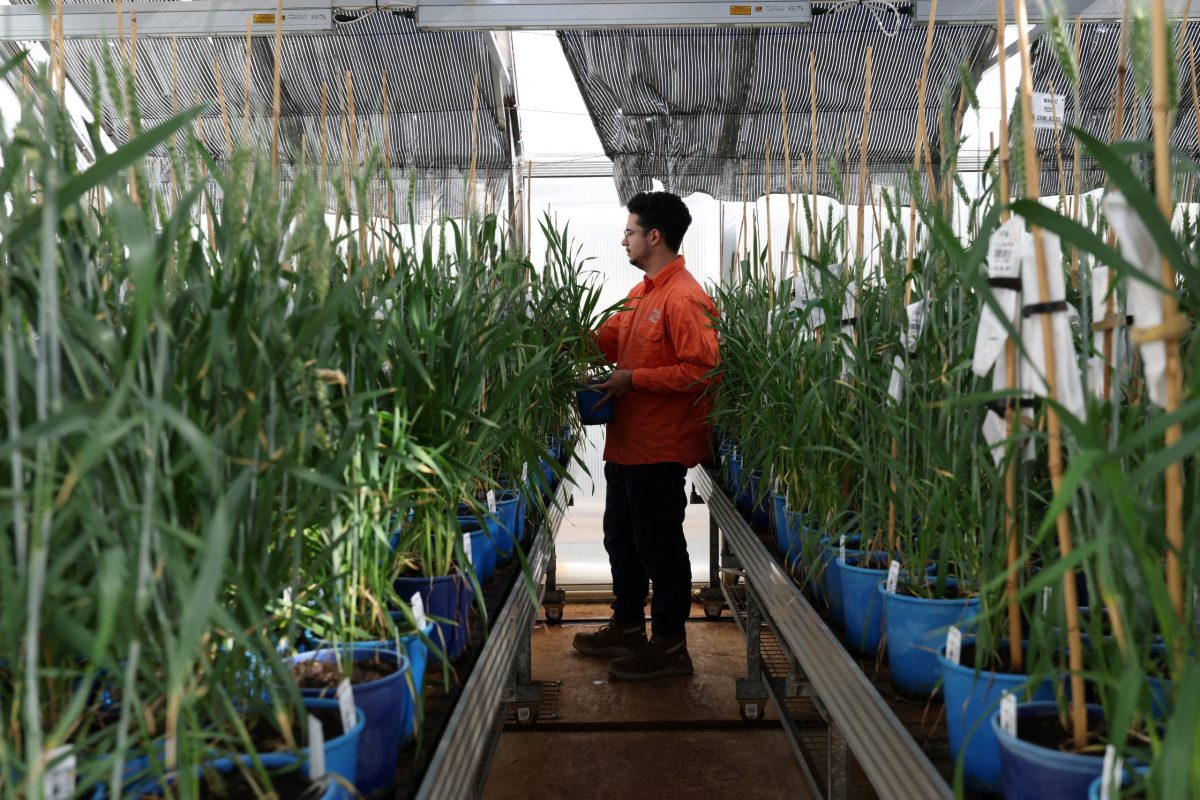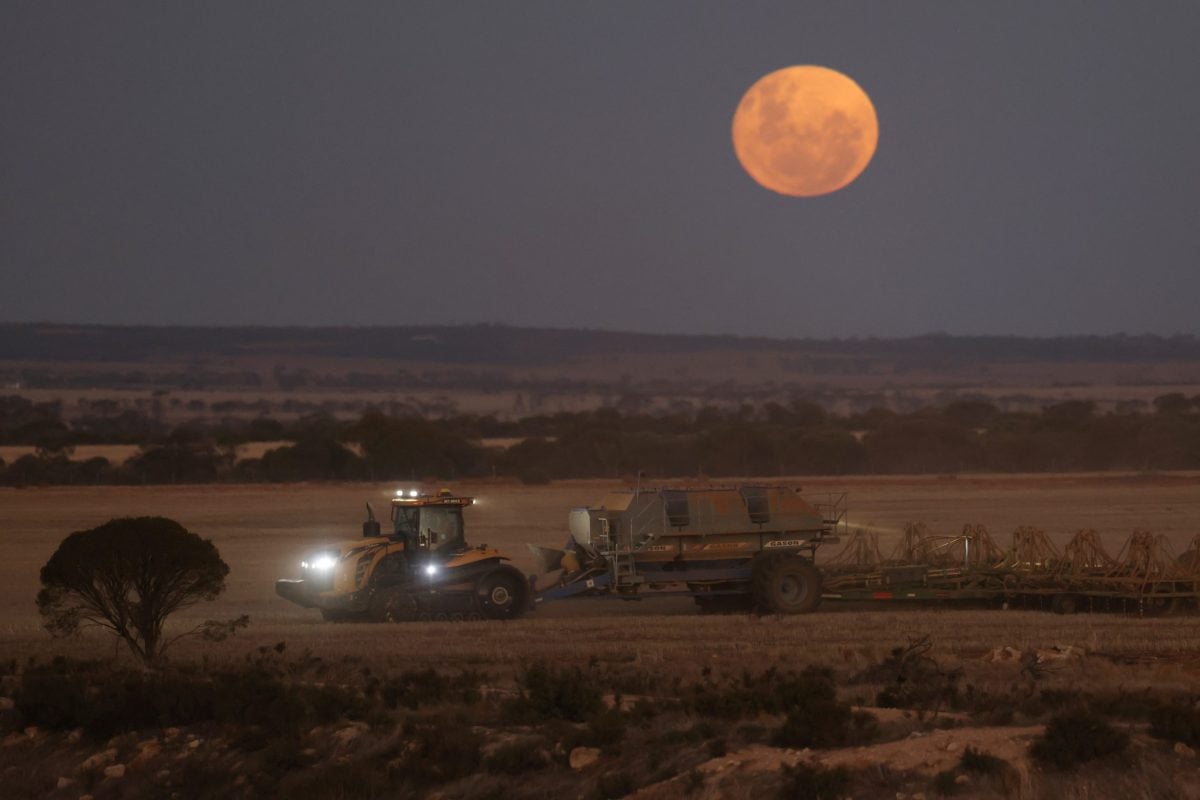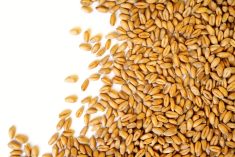Merredin, Australia | Reuters — In a newly sown wheat field, Curtis Liebeck scoops up a fistful of sandy soil and lets it pour through his fingers. The light-brown dirt bears little resemblance to the dark, clumpy earth of rainier nations.
The Liebeck farm, 300 kilometers from Perth in Western Australia, gets half the rain of the wheatbelts of central Kansas or northern France. Growing-season rainfall across the state’s crop lands has declined by about one-fifth over three decades.
That should make farming harder. But Liebeck’s wheat yield has doubled since 2015.
Read Also

U.S. grains: Soybeans rise on China demand hopes; corn and wheat rebound
Chicago Board of Trade soybean, corn and wheat futures rose on Monday on signs of progress towards the end of a record-long U.S. government shutdown, along with expectations of a revival of U.S. soybean exports to China, analysts said.
Liebeck, 32, is part of a revolution in farm management that has enabled Australia to produce around 15 million metric tons more wheat annually than in the 1980s, despite hotter, drier conditions. The increase is equivalent to around 7 per cent of all wheat shipped around the planet each year.
Australia’s gains in wheat farm productivity have exceeded those in the United States, Canada and Europe, according to U.S. Department of Agriculture data, and continue to rise while those of other developed markets slow or reverse.
The ability of Australia’s farmers to produce more wheat for a growing global population owes largely to a cluster of innovations since the 1980s that changed the seeds farmers plant, how they plant them, and how they cultivate the soil, many growers and researchers say. These advances have been turbocharged by Australia’s system of applied research, and by a relentless quest for efficiency among farmers who receive minimal subsidies.
This account of how Australia’s wheat growers defied the climate odds is based on interviews with more than 20 farmers and researchers, a review of more than a dozen academic papers and an examination of decades of farm and weather data. Reuters visited four farms, a seed-breeding company and two government research facilities.
Australia isn’t the biggest wheat producer, and its fields aren’t the most fruitful. But it is important for two reasons. Its modest population means its additional production feeds other countries. And it is the driest inhabited continent, where increasing climate volatility might have rendered some agriculture unviable. Yet it is among the world’s top wheat exporters.
Australia’s success has influenced research in other nations that have dry crop lands, including the U.S. and Canada, five scientists told Reuters. Some Australian practices, to be sure, such as soil re-engineering, haven’t been replicated as widely, sometimes because ground conditions are less suitable. But the country’s focus on closing the gap between theoretical maximum crop yields and real-world outcomes has spurred global efforts to improve productivity over the past 15 years, coinciding with intensifying climate change.
Liebeck’s farm in 2023 received its lowest rainfall in half a century, yet it produced 1 ton of wheat per hectare (2.47 acres) — to the amazement of his 66-year-old father, Ken.
“I asked dad what it would have been like in his day and he said, ‘Absolute disaster,’” Liebeck said.
The elder Liebeck told Reuters he would have produced just 400 kg a hectare in such conditions around the turn of the millennium.
Soil like beach sand
Farming in Australia has always been precarious. The weather swings between drought, heat, fire and flood. The soil is short of nutrients.
Western Australia, the top wheat-exporting region, has seen the biggest decline in average rainfall of Australia’s cropping areas over the past three decades, official weather data show. Rainfall patterns have shifted, with more falling in summer, when fields are fallow, and less in winter, when crops are growing.
The state also has some of the poorest soils.
“Imagine beach sand,” said Tress Walmsley, CEO of Perth-based seed-breeding company InterGrain, which develops wheat varieties that can better cope with Australian conditions. “These soils are nutrient-depleted, often toxic and water-repellent. And at the end of each season, the crop runs out of water.”
Thirst for water provided the spark for many of the changes in Australian agriculture. In 1984, scientists Reg French and Jeff Schultz calculated that in optimum conditions, after evaporation, Australia’s farmers should be able to produce 20 kilograms of wheat per hectare for every millimeter of rain during the April-to-October growing season — about four times what they were achieving.
The discovery allowed producers to plot on a graph what they had grown and what they might have grown, said John Kirkegaard, a plant scientist at the Commonwealth Scientific and Industrial Research Organisation (CSIRO), the Australian government’s national science agency. This turned the focus of growers and researchers to closing the yield gap, and they began benchmarking water-use efficiency to extract more crop per drop.
Switching to no-till
A key step was switching to no-till agriculture. Constant plowing to control weeds damaged soil and exposed it to evaporation, reducing the amount of water stored for crops.
No-till methods, using herbicides instead of plowing, grew out of 1930s dust-bowl America. Australian adoption jumped from roughly five per cent in the early 1980s to about 80 per cent, according to the Grains Research and Development Corp. In Western Australia, it’s more than 90 per cent.
Canadian adoption of no-till practices sat at 60.9 per cent in 2021, though adoption is greater than 67 per cent in much of Saskatchewan and Alberta according to that year’s census of agriculture.
One drawback was that over time, farm equipment driven over untilled fields compacted the deeper levels of the soil, hindering water infiltration and root growth. To address that, Australian farmers began to restructure soils, spreading lime to reduce acidity, then employing other kinds of heavy machinery.
Liebeck points to his deep ripper, a massive, bright-orange steel frame with 10 metal claws that tear through the soil at up to 84 centimeters deep. It generates such resistance that his 540-horsepower tractor can haul it only at walking pace.
The ripper, and another device called a spader, a rotating cylinder with protruding shovel heads, break up compacted layers of earth. While plowing, ripping and spading are all tillage methods, no-till farming refers to eschewing the traditional practice of plowing to kill weeds and prepare fields for planting each year. Ripping and spading are less-frequent but bolder interventions, often performed at much greater depths. They change the structure and constituents of the soil, churning unproductive layers into a more-absorbent mix that better holds water and nutrients.
Hauling the ripper through a field can improve his wheat yield by between 36 per cent and 50 per cent, Liebeck said. The machine cost A$220,000 (C$197,230). “A bit dear for a glorified shovel,” he said, but it “digs up profit.”
Rippers and spaders are used elsewhere, but rarely as intensively as in Australia, according to farmers and researchers. In wetter areas such as Europe, rippers are harder to pull through heavy soil that is typically plowed.
Two-thirds of Western Australia’s roughly 4,000 growers had deep-ripped, spaded or inverted their soil by 2023, state government-commissioned research found, up from 52 per cent in 2019.
Efforts to improve Australian soil echo practices in Europe and North America to drain land and reclaim it from the sea, said Kirkegaard. “But the sorts of strategies in Australia that are now making previously poor farming land into good farming land are probably unique,” he said.
Other innovations helped growers curb disease. They introduced new crop rotations, including canola and lupins, a legume used for animal feed. Canola area shot from 50,000 hectares in Australia in 1989 to around 3.5 million hectares (8.65 million acres) today, agriculture ministry data shows.
Farmers began sowing two to four weeks earlier, sometimes in dry ground, so plants would flower at optimal times, Kirkegaard said. Sowing now starts around mid-April, giving wheat several months to grow during the southern winter and spring, when water remains available, so that it can mature before the summer heat arrives toward the end of the year.
Productivity takes off
Productivity took off. Western Australian farmers in the early 1980s grew 3.3 kg of wheat per hectare for every millimeter of growing-season rain, a third below the national average, government data show. In 2024, they achieved 9.3 kg per millimeter, just one-fifth shy of the 11.5 kg nationally.
Those improvements helped Australia double its wheat exports in the last four decades to well over 20 million tons a year. Most goes to Southeast Asia and the Middle East, where populations have grown rapidly.
Rising production has kept a lid on prices. A bushel of wheat on the Chicago Board of Trade, the global benchmark, averaged about $3.50 (C$4.82) during the 1980s. The world population has soared by 3.5 billion people since then but a Chicago bushel costs around $5.50 (C$7.57), an increase far below the rate of inflation.
A serious threat to Australian wheat supply would cause prices to rise considerably, said Dennis Voznesenski, an agricultural analyst at Commonwealth Bank of Australia. The country accounts for a similar proportion of global exports as Ukraine did before Russia’s invasion, he noted. Wheat prices rose by about 60 per cent when the war disrupted production and exports.

Advances in breeding
There is room for further productivity gains, farmers and researchers say.
Advances in seed breeding and farm management have lifted maximum theoretical yields to around 25 kg per millimeter, which should rise to 30 kg and perhaps beyond, said Kirkegaard.
Researchers and breeders are testing wheat varieties whose coleoptiles – the protective sheath that surrounds the shoot – can push up from a soil depth of 10 to 12 centimeters rather than the usual 2 to 4 cm, allowing seeds to be planted into subsoil moisture, according to Greg Rebetzke, a CSIRO scientist. Field trials show long coleoptiles should increase yields by up to 20 per cent, and several varieties should be available commercially in Australia within five years, he said.
“People are now looking at some of the drought technologies we’ve developed and asking if they’ll be useful in their countries,” Rebetzke said, identifying Canada, India, Bangladesh and sub-Saharan Africa as sources of interest. “The dry environment we have is very much the future of some countries that are wetter now.”
Government scientists in Western Australia are experimenting with further re-engineering of soil, adding ingredients such as clay, compost and gypsum to increase the earth’s capacity to hold water and produce wheat, said Gaus Azam, the researcher leading the project.
Ty Fulwood, a grower in Grass Valley, east of Perth, showed Reuters the upshot of those efforts. “They are literally trying to create the perfect soil in 10-centimeter-depth increments,” he said, standing in one of his fields surrounded by test strips of re-engineered earth, where varying amounts of clay had been added to the top half-meter of soil to identify the best growth-enhancing mix.
It’s expensive, Fulwood said, but if the promised doubling of yields is demonstrated, farmers and researchers will put money into it.
Adaptation has limits, to be sure. Wheat doesn’t thrive in hot conditions, which accelerate evaporation and growth phases. Rainfall is not only diminishing but is becoming less predictable.
Plant scientist Zvi Hochman, in a 2017 paper, found hotter, drier conditions had reduced Australia’s maximum achievable wheat yield by 27 per cent between 1990 and 2015.
“With continued effort we can move from achieving 55 per cent of potential yields to about 80 per cent, but going beyond that in a variable climate is likely to be uneconomic,” Hochman told Reuters.
And there are downsides to the new ways. Herbicides can harm the environment and encourage weed strains that are resistant to the chemicals, scientific studies show. Australian farmers are using more synthetic nitrogen as fertilizer — albeit less per hectare than many others, according to the U.N. — which is manufactured using natural gas, a contributor to atmospheric carbon emissions. And they are intervening on a massive scale in the earth.
“We should always be cautious because we are disturbing the natural soil,” said Azam, the researcher. “But the benefits outweigh the risks.”
Other nations
Challenging soil and weather conditions keep Australian yields low by global standards. Last year’s 2.6 tons per hectare lagged behind Canada (3.28 tons) U.S. (3.5 tons), China (5.9 tons), and Britain (7.3 tons), USDA data shows.
Some developing nations, including China and India, have made faster progress than Australia in improving wheat yields since the 1980s. But productivity growth in many advanced economies has been slower, according to the USDA, which global researchers attribute in part to soil degradation and restrictions on fertilizers and pesticides.
Farmers and scientists credit Australia’s system of applied research and low subsidies for helping to set it apart.
They point to the Grains Research and Development Corp, a statutory corporation established in 1990 by an act of parliament to help drive industry innovation. Growers give it one per cent of their grain revenue, topped up by government funding. Its committees blend farmers, scientists and agribusiness executives. That means the research agenda isn’t dominated by farmers seeking quick fixes, nor by scientists pursuing blue-sky projects, said Kirkegaard.
Few countries replicate this model. Canada has levy-funded research groups but they are less centralized. In Europe, some researchers may never speak to a farmer, leading to impractical studies, Kirkegaard said.
Australia has among the lowest agricultural subsidies, according to the OECD. And they go largely to research and biosecurity, rather than payments to farmers or into trade restrictions – common practices elsewhere.
At his farmhouse, surrounded by eucalypt trees, Liebeck said he isn’t daunted by an increasingly hostile climate.
“The challenge of growing more crop off less rain is exciting,” he said. “I’m optimistic.”














